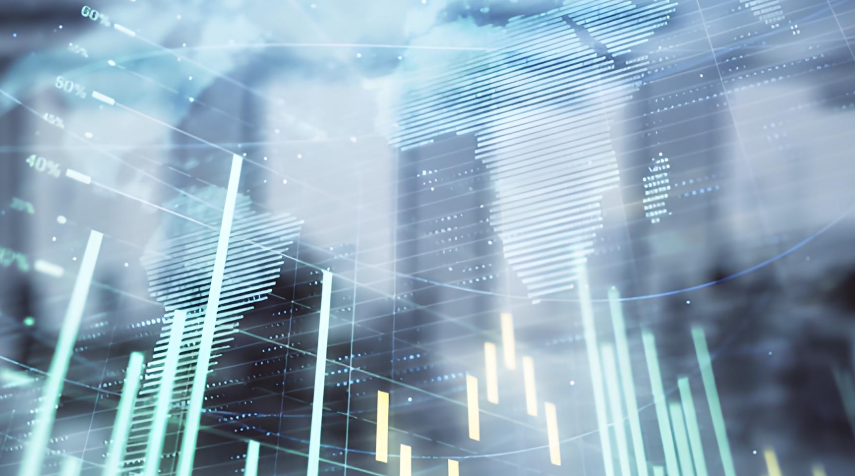In January,the Consumer Price Index (CPI) in the United States surpassed expectations,triggering a series of reactions that have rapidly spread across various sectors,exerting a profound impact on consumers,investors,businesses,and government entities alike.This unexpected inflation has not merely been a number on a report; it has materialized into a palpable force reshaping economic interactions on multiple levels.
For everyday consumers,the shock of inflation hitting harder than anticipated is almost instantaneous.Grocery aisles,once seen as mundane,have transformed into arenas of financial struggle as food prices have skyrocketed.Staples like fruits,vegetables,and meats have become increasingly cost-prohibitive,their prices surging as consumers find that their usual shopping lists have swelled substantially in cost.Energy prices,too,have followed a trajectory influenced by global events and market fluctuations,leading to a significant hike in gasoline prices that has substantially increased commuting costs.Furthermore,rising home heating expenses have become a pressing financial burden,adding to the economic strain faced by households.As these pressures mount,consumer confidence plummets; the anxiety over future living expenses compels many to reassess their spending habits.Non-essential expenditures are often the first casualties,with discretionary items such as high-end electronics,fashionable clothing,and leisure activities seeing significant declines.The once-bustling malls and packed cinemas now face dwindling foot traffic,as retail sales decline drastically due to the inflationary fallout.This chain reaction quickly cascades along the supply chain,with production companies grappling with reduced order volumes and excessive inventory,leading them to cut back on operations and raw material procurement,and in some instances,resorting to layoffs,resulting in a loss of countless jobs and a detrimental impact on many households’ incomes.
The investment landscape has similarly been shaken by the unexpected inflation surge.Faced with an increasingly uncertain economic outlook,investors have adopted a cautious approach.Stock market volatility has intensified,with stock prices resembling boats tossed in turbulent seas.Investor sentiment is characterized by apprehension about future corporate profitability,prompting a reevaluation of their stock holdings.Funds behave like migratory birds sensing danger,swiftly redirecting towards more stable asset classes.Gold,known for its longstanding history as a safe-haven asset,once again attracts significant interest from investors.With the influx of funds,gold prices have surged,reinforcing its appeal as a safeguard against economic turmoil.Meanwhile,the real estate market has not escaped this upheaval.Potential homebuyers,confronted with anticipated economic constraints,find themselves hesitating in their purchasing decisions,leading to a notable decline in housing demand.Developers face slowed sales and challenges in capital recovery,with some smaller firms even teetering on the brink of bankruptcy due to cash flow issues.
Businesses are not immune to the tumult either.The drastic rise in raw material costs directly squeezes profit margins,while shifting consumer demand exacerbates challenges related to product sales.In order to navigate these difficulties,companies may contemplate increasing product prices in an attempt to transfer cost burdens to consumers.However,this approach risks diminishing market competitiveness,as consumers opt for cheaper alternatives.Alternatively,businesses might aim to optimize cost structures by trimming unnecessary expenses, such as reducing investment in research and development or cutting back on employee benefits.While these measures may alleviate cost pressures temporarily,they could impede innovation and diminish employee morale,jeopardizing long-term growth prospects.Additionally,firms may curtail investments and scale down operations to mitigate operational risks,a strategy that,paradoxically,forfeits potential growth opportunities and risks falling behind in the competitive landscape.
such as reducing investment in research and development or cutting back on employee benefits.While these measures may alleviate cost pressures temporarily,they could impede innovation and diminish employee morale,jeopardizing long-term growth prospects.Additionally,firms may curtail investments and scale down operations to mitigate operational risks,a strategy that,paradoxically,forfeits potential growth opportunities and risks falling behind in the competitive landscape.
 such as reducing investment in research and development or cutting back on employee benefits.While these measures may alleviate cost pressures temporarily,they could impede innovation and diminish employee morale,jeopardizing long-term growth prospects.Additionally,firms may curtail investments and scale down operations to mitigate operational risks,a strategy that,paradoxically,forfeits potential growth opportunities and risks falling behind in the competitive landscape.
such as reducing investment in research and development or cutting back on employee benefits.While these measures may alleviate cost pressures temporarily,they could impede innovation and diminish employee morale,jeopardizing long-term growth prospects.Additionally,firms may curtail investments and scale down operations to mitigate operational risks,a strategy that,paradoxically,forfeits potential growth opportunities and risks falling behind in the competitive landscape.In this economic turbulence,the government plays a crucial role.It is imperative for authorities to closely monitor inflation trends and devise appropriate policies to stabilize the economy.Taxation policy emerges as a vital lever for economic regulation; the government may consider tax cuts to ease the burden on businesses and consumers,stimulating economic vitality.Providing tax incentives for small and medium-sized enterprises can encourage expansion and job creation,while consumer spending can be bolstered through targeted subsidies.Increased market regulation is necessary to combat price gouging and hoarding behaviors that disrupt market order,maintaining a sense of stability.Moreover,the government might advocate for industrial restructuring,enhancing support for emerging sectors and guiding capital towards green energy,artificial intelligence,and other innovative domains to fortify the economy's resilience and sustainability.
The repercussions of January’s CPI inflation in the United States are extensive and far-reaching,sending ripples across every facet of the economy.Consumers,investors,businesses,and government entities must remain vigilant and proactive in addressing these challenges.Only through collaborative efforts can the potential risks be mitigated,paving the way for economic stability and sustainable growth.Moving forward,it is crucial to continuously observe and assess the aftermath of this episode,ensuring preparedness to confront future economic challenges.